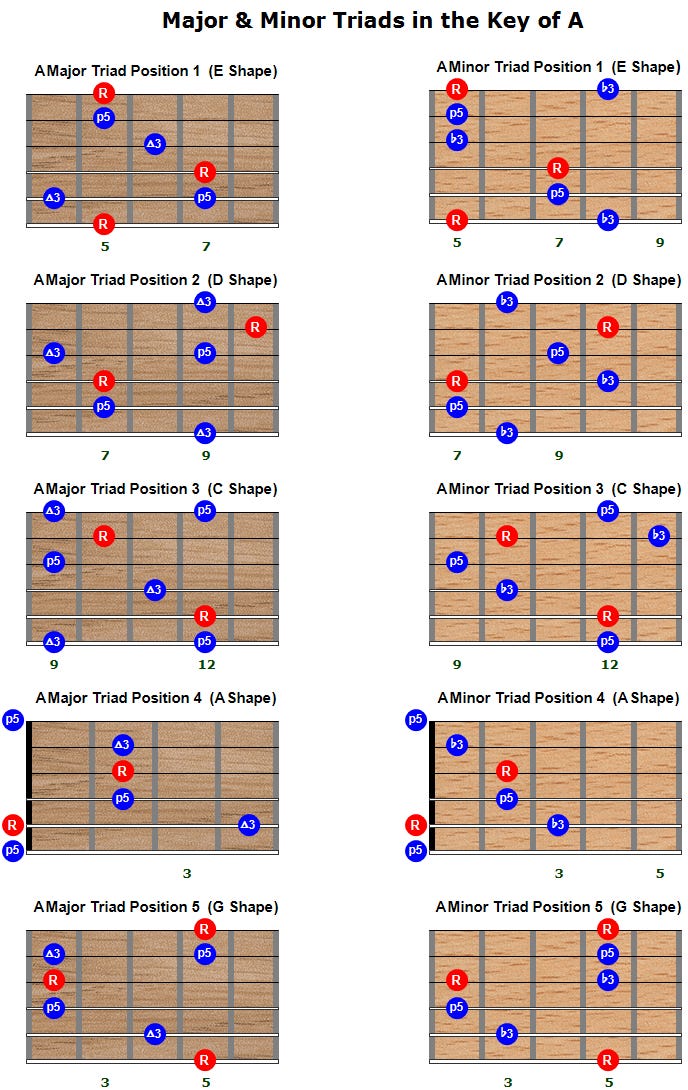Triads & Progressions
Use triads to augment your guitar tones! Use them to add flavor to your guitar playing, whether playing solo, rhythm, or lead guitar, or to add variety when accompanying another guitarist.
The left column in the diagrams that follow display “Major Triads.” The right column shows “minor triads.” Note that the root note of each position is shown as a red circle. These are shown in the Key of A, but to play in any other key, simply slide the entire shape up or down so that a red note matches the desired key. (For example to play the “Position 1” shape in C rather than A, simply slide the root note on the 5th fret of the low-E string up 3 frets, bringing the rest of the shape as-is with it.)
Play these in a variety of ways. Use them to add flavor to your guitar playing, whether playing solo, rhythm, or lead guitar, or to add variety when accompanying another guitarist. You can arpeggiate all or some of the notes of each pattern, or play several notes as a chord.
Also notice that chord intervals of “Major triads” consist only of the root note, the major 3rd, and the perfect 5th notes. “Minor triads” consist of the root, a flatted 3rd, and a perfect 5th.
To form the complete chord, it is best to use at least 3 notes from the pattern - the root note, the third interval, and the perfect fifth. (For example, the C-chord from the C-F-G progression (below) only contains the 1-3-5 interval notes of C, E & G. When you play only one of each note, you are still playing a complete chord.)
As one example of how to use triads, below are some I-IV-V progressions:
The chord progressions above each use the same shapes. In all of these, the I-chord uses position 1, the E-shape. Both the IV and V-chords above are using position 3, the C shape.
Instead, you could have chosen to use any major shape from the top of this post. You just need to slide the entire shape up or down so that the (red) root note of the pattern is the root note of the chord you wish to play.







